#Franz Bruner
Text

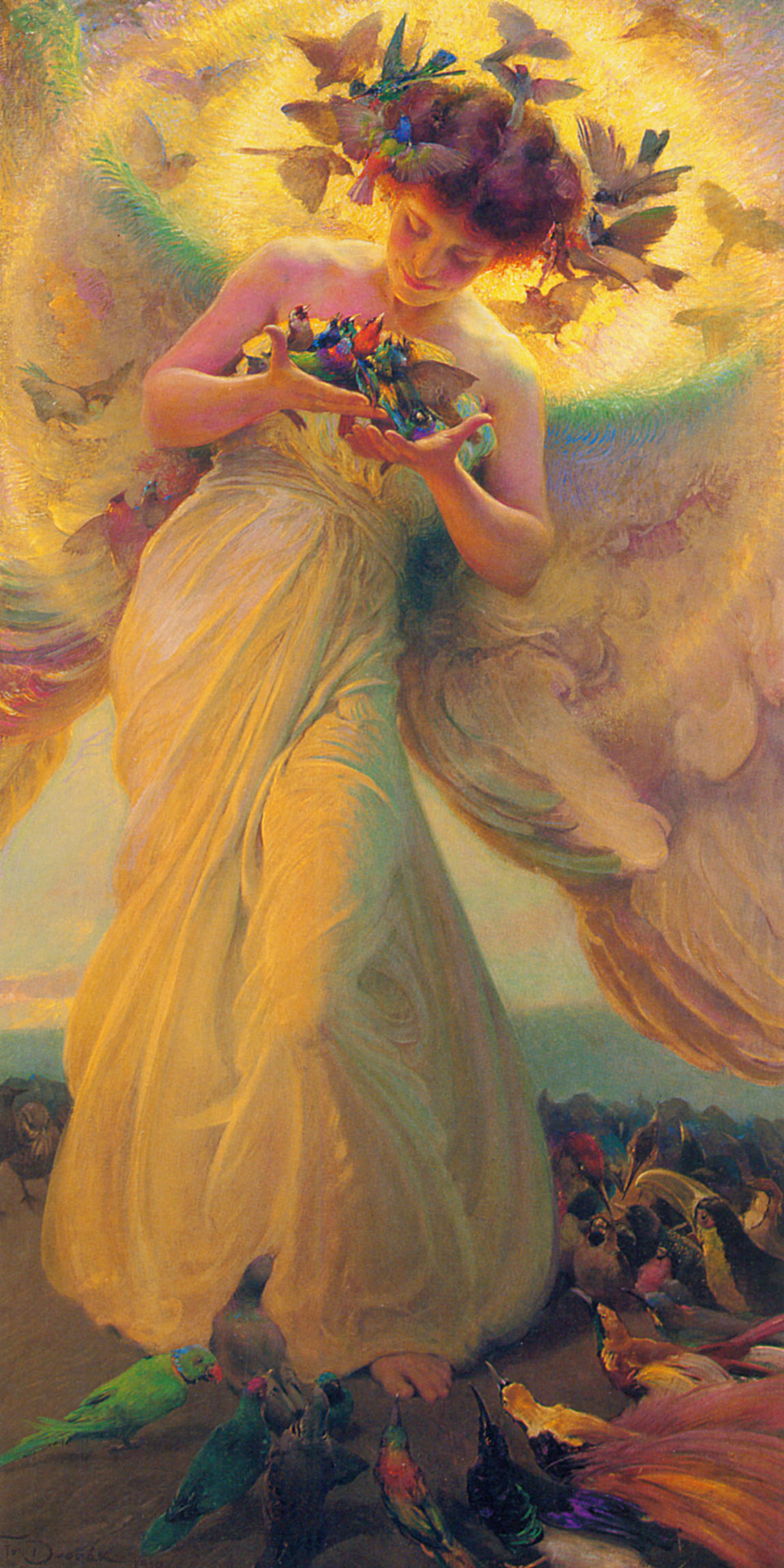

Franz Dvorak
#Franz Dvorak#dvorak#František Dvořák#painter#czech republic#The Angel of the Birds#In the Orchard#guardian angel#Franz Bruner
1 note
·
View note
Photo

"In The Orchard", 1912, by František Dvořák (born Bruner, also known as Franz Dvorak or Franz Bruner, was a Czech painter. He had come into contact with the New Spirituality, and attempted to integrate Eastern spirituality into his paintings. He also did portraits of Ramakrishna and Sarada Devi; Born: November 14, 1862, Prelouc, Czechia - Died: June 7, 1927, Prague, Czechia).
2 notes
·
View notes
Text
In the 20th century.
Biography of translators in the 20th century.

Tadeusz Boy-Żeleński (1874-1941), a Polish poet, translated more than 100 French literary classics, including works by poet François Villon, by writers Rabelais and La Rochefoucauld, by philosophers Montaigne and Montesquieu, by novelists Stendhal, Balzac and Proust, by playwrights Molière, Racine, Marivaux and Beaumarchais, and by philosophers Voltaire, Descartes and Pascal. He was murdered in July 1941 during the Nazi occupation of Poland, together with 24 other Polish professors, in what became known as the massacre of Lviv professors (Lviv is now in Ukraine).
Zenobia Camprubi (1887-1956), a Spanish feminist writer, was the first translator of Bengali writer Rabindranath Tagore’s works into Spanish, and translated 22 works by Tagore (collections of poems, short stories, plays) over the years. Married to Spanish poet Juan Ramón Jiménez, she was a pioneer of feminism for actively promoting women in society in all the places where she lived (Spain, Cuba, the United States, Puerto Rico).
James Strachey (1887-1967), an English psychoanalyst, translated with his wife Alix Strachey (1892-1973) all the works of Austrian psychoanalyst Sigmund Freud after moving to Vienna, Austria. The 24-volume translation was published by Hogarth Press in London under the title “The Standard Edition of the Complete Psychological Works of Sigmund Freud”, with introductions to Freud’s various works, and extensive bibliographical and historical footnotes. It became the reference edition of Freud’s works in English, as well as a reference work for translations into other languages.
Boris Pasternak (1890-1960), a Russian writer, turned to translation to provide for his family after being vilified for his refusal to glorify communist values in his writings. He translated works by German poets Goethe, Rilke and Schiller, by French poet Verlaine, by Spanish dramatist Calderón de la Barca, and by English playwright Shakespeare. Because of their colloquial and modernised dialogues, his translations of Shakespeare’s plays were more popular with Russian audiences than translations by Russian writers Mikhail Lozinsky (1886-1955) and Samuil Marshak (1887-1964).
Jorge Luis Borges (1899-1986), an Argentine writer, translated into Spanish — while subtly transforming — works by English writers Rudyard Kipling and Virginia Woolf, by American writers William Faulkner, Edgar Allan Poe and Walt Whitman, by German writers Hermann Hesse and Franz Kafka, by French writer André Gide, and by others. He also wrote and lectured extensively on the art of translation.
Charlotte H. Bruner (1917-1999), an American scholar, translated works by African French women writers for them to reach a wider audience. With her husband David Kincaid, she spent one year in Africa interviewing these women writers, and aired these interviews after their return to the United States. She was a pioneer in African studies and in world literature at a time when American universities mainly taught European literature.
Simin Daneshvar (1921-2012), an Iranian writer, and Jalal Al-e-Ahmad (1923-1969), an Iranian philosopher, translated many literary works into Persian. Simin Daneshvar translated works by Russian writers Anton Chekhov and Maxim Gorki, by American writer Nathaniel Hawthorne, by Austrian writer Arthur Schnitzler, by Armenian-American writer William Saroyan and by South African writer Alan Paton. Jalal Al-e-Ahmad translated works by Russian novelist Fyodor Dostoyevsky and by French writers Albert Camus, Jean-Paul Sartre, André Gide and Eugène Ionesco.
1 note
·
View note
Text
What is Mesotherapy and It’s effects?
Recent studies have shown that micro-injections of botulism toxin into your body can help treat some skin conditions, such as psoriasis or eczema. This is called meso-therapy.
Meso-therapy was first described in Russia more than 50 years ago, but it has recently been picked up by cosmetic doctors around the world to improve the appearance and function of the skin.
It works by relaxing the surface layers of the skin, which allows for improved cell turnover and healthier functioning of the inner layer of the skin.
Click here to gain more info regarding Mesotherapy Treatment in Delhi
History of mesotherapy

Photo by cottonbro on Pexels
In 1980, Dr. Franz Bruner conducted an experiment with eight patients where he injected each patient with a different mixture of products to determine what caused their skin to smooth out and re-tone. This procedure is now known as microdermabrasion and it was not until 2001 that someone realized this technique could be done in combination with another product to enhance results!
Dr. Bruner discovered his new method of micrografting by injecting small amounts of glucose into the pores of the skin. The glucose binds to nutrients in the surrounding layers of the skin causing them to layer up and be removed during your next professional dermaplaning or chemical peel.
Since then, many other chemicals have been mixed together and injected into the skin to see if they can improve the overall look of the skin. These so called ’meso’ treatments include vitamin injections, enzymatic facials, and others. One such treatment is micro needling, which will be discussed later in this article.
Many people use these treatments alone or in conjunction with one another for incredible results. Many professionals now perform both internal and external massotherapies' to treat a wide variety of conditions, most notably acne. Acne may be due to hormonal changes or bacterial infections, and these therapies work by enhancing the natural healing process of the skin.
Mesotherapy has become very popular throughout the world and is accepted by most major medical associations.
What is the source of your skin treatment?

Photo by Cats Coming on Pexels
A less invasive way to treat skin conditions is mesotherapy, an injection technique that uses special chemicals to soothe and reduce inflammation.
Make sure to check out the best Skin & Hair Clinic in Delhi for mesotherapy
One of the most common places people get injected with chemical agents is their feet or ankles. This is because many foot illnesses can be treated using chemical injections and/or topical applications of medications directly onto the affected area.
Massotherapies' are typically made from small molecules such as vitamin B12, cortisone, lidocaine (local anesthesia), or other similar drugs. They are usually mixed together in a solution and then inserted under the surface of the skin.
The effects of these treatments take around 12 months for each person due to individual differences in medical needs and skin types. However, most patients see some improvement within eight weeks. Some find it takes much longer than this.
There have been case reports of very serious side effects occurring several days after a meso injection, but they are extremely rare.
What are the different types of mesotherapy?
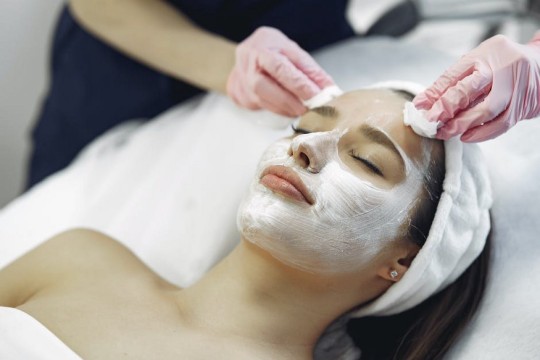
Photo by Gustavo Fring on Pexels
In addition to using alcohol as a solvent for your injections, there are several other ways you can administer meso treatments. One of these is called ionic mesotherapy. Ionic mesotherapy uses a special needle type that works by disrupting the natural balance of minerals in the skin.
By altering this equilibrium, people achieve various effects such as improved blood circulation, smoother skin texture, reduced inflammation, and tighter or looser collagen fibers in the dermis (the top layer of the skin). All of these changes enhance the overall appearance and health of the skin.
Ionic mesotherapy was first used back in 2001 to treat patients with chronic leg ulcers who did not respond to standard wound care. Since then, it has been studied for a variety of applications including cosmetic dermatology, rosacea, and hair growth.
You can also visit Best Clinic for Mesotherapy Treatment in Delhi to know more about various skin and hair treatments.
What are the effects of mesotherapy?

Photo by Andrea Piacquadio on Pexels
A growing number of professionals are incorporating massotherapies' into their practice to help patients achieve their cosmetic goals. Discussed under different terms such as microinjections, chemical peels, or laser treatments, these administrations use small injections or drips of chemicals or vitamins onto specific areas of your skin to reduce inflammation and promote new skin cell production.
One of the most popular forms is dermal fillers. These are usually injected into older areas of your face like the cheeks or the area around your nose and eyes. Some people also have their body doxurants injected directly into their skin to even out their tanneration and increase blood circulation.
While many people gain some relief with this treatment, there are no clear answers about how well it works and what possible side effects may occur. Because every person’s skin reacts differently to products, individuals’ results will vary.
Sadly, though not always, there have been reports of serious complications such as infections, allergic reactions, and in rare cases, seizures or strokes.
Is mesotherapy safe?

Photo by Klaus Nielsen on Pexels
While there have been some reports of patients developing serious health problems due to improper use of this technique, it is not known whether or not mesotherapy can cause long-term damage.
There are several reasons why people develop unsightly cosmetic issues such as excess skin, fat deposits, and/or wrinkles. Cosmetic treatments for excessive hair growth, acne, and other conditions often include medications and chemicals. Because mesothetics contains natural substances that promote tissue regeneration, many people believe it to be safer than traditional medication.
However, just like any medical treatment, only professionals with appropriate training should perform this procedure. Make sure you research your practitioner before and after doing anything related to this work.
What are the side effects?

Photo by Andrea Piacquadio on Pexels
Due to its unique nature, there have been no serious adverse reactions reported with meso-therapy. Some patients may experience minor local symptoms such as pain or redness at the injection site but these usually go away within an hour.
MesoTherapy in Delhi
In fact, most people do not even know they were injected with medication until later when the patient feels well enough to describe their symptoms. This lack of awareness is one of the reasons that there are so many case reports about people misusing meso-therapies and experiencing long term complications.
There have also been very few studies done on this form of treatment so we don’t know all of the potential risks involved. However, what we can say for sure is that injecting unknown substances into your body has the potential to be harmful.
It is important to note that although rare, it is possible for someone who has had a severe reaction to another type of meso-therapy (for example fluvoxamine for acne) to develop an allergic reaction to phenyl toluene in oxymetazoline. Therefore, just like with any new medicine, if you are concerned about potential side effects ask your doctor about risk factors before administering treatments yourself.
Symptoms of a delayed hypersensitivity reaction include shortness of breath, chest tightness, throat swelling, skin rash, hives and/or ulceration of the lips and mouth.
What should I ask my dermatologist?

Photo by Karolina Grabowska on Pexels
As mentioned before, meso-therapy is a popular noninvasive cosmetic treatment that works to improve your skin by stimulating the production of natural chemicals called cytokines.
Cytokines are naturally occurring hormones in our body that play an important role in regulating many physiological processes, such as inflammation or immune responses.
By enhancing the expression of these cytokines, meso-therapies can help reduce the appearance of fine lines and wrinkles, treat chronic sun damage, revitalize collagen, and boost wound healing.
There are several different types of meso-therapies, each with their own purported benefits. However, not all treatments work for every person, and no two treatments have the same degree of efficacy for anyone.
As such, it’s very difficult to say what changes will be seen after any one session. Some people may see results within a few days, while others may need months to feel them.
It is also worth noting that some studies report better outcomes from placebo treatments than those where participants received a true intervention. Therefore, even though a particular therapy seems promising, it could be simply due to the effect of suggestion.
1 note
·
View note
Photo
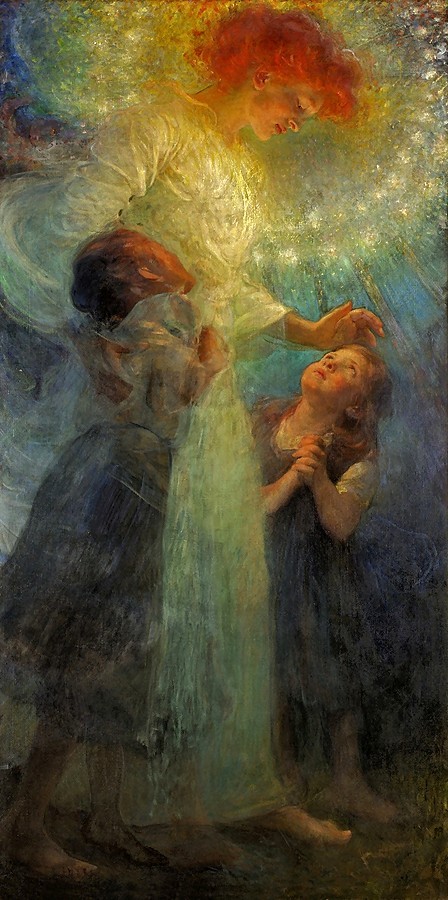
František Dvořák, born Bruner, also known as Franz Dvorak or Franz Bruner (14 November 1862, Přelouč - 7 June 1927, Prague) was a Czech painter.
dvorak, franz - The Guardian Angel
34 notes
·
View notes
Photo
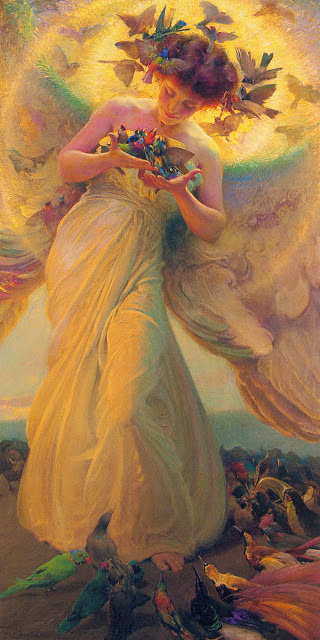
František Dvořák, born Bruner, also known as Franz Dvorak or Franz Bruner
72 notes
·
View notes
Text
František Dvořák, born Bruner, also known as Franz Dvorak or Franz Bruner (14 November 1862, Přelouč - 7 June 1927, Prague) was a Czech painter.
František Dvořák, born Bruner, also known as Franz Dvorak or Franz Bruner (14 November 1862, Přelouč – 7 June 1927, Prague) was a Czech painter.
He was the son of a tailor named Václav Bruner. He later changed his name to “Dvořák”, possibly for patriotic reasons. He displayed artistic talent from an early age and when he was fourteen, his father sent him to the pedagogical institute in Kutná Hora. At the age of seventeen, his desire for an artistic career led him to the Academy of Fine Arts, Prague, where he studied with František Čermák.…
View On WordPress
0 notes
Photo

In the Orchard, by Franz Dvorak.
16 notes
·
View notes
Photo
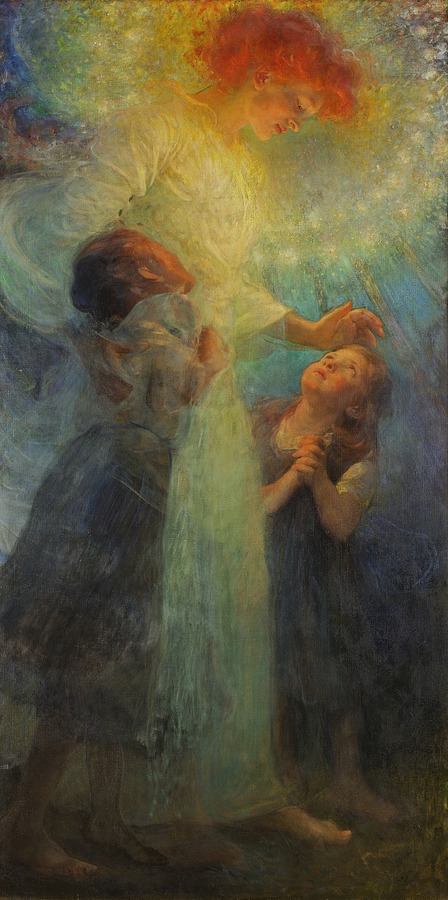
Franz Dvorak - Guardian Angel 1900.
František Dvořák, born Bruner, also known as Franz Dvorak or Franz Bruner (14 November 1862, Přelouč - 7 June 1927, Prague) was a Czech painter.
43 notes
·
View notes
Photo

František Dvořák, born Bruner, also known as Franz Dvorak or Franz Bruner
3 notes
·
View notes